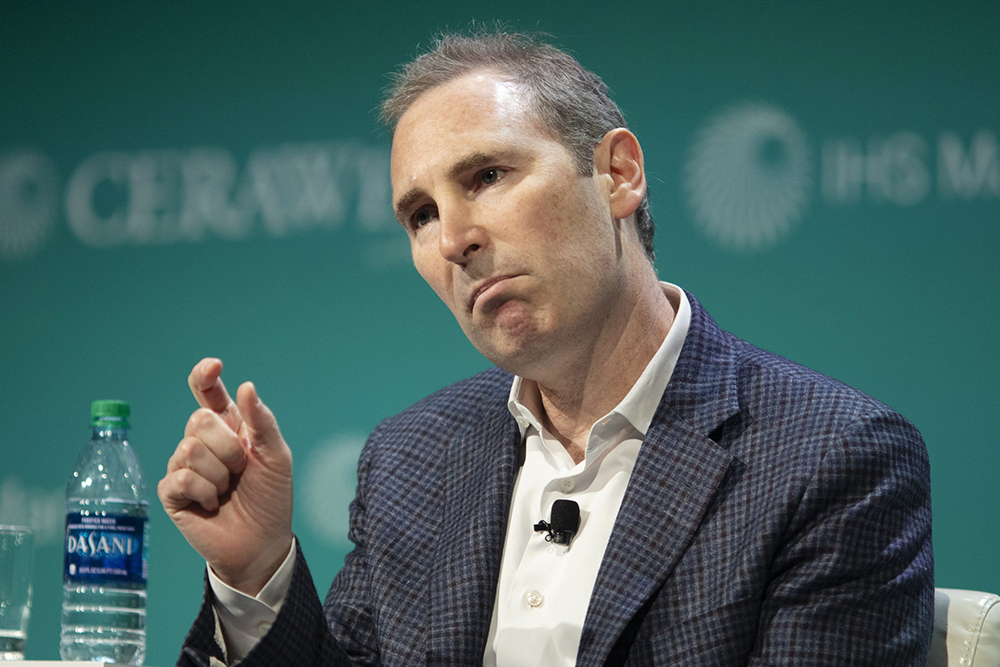
5月中旬,一个坏消息让亚马逊(Amazon)全球客服人员措手不及:更多轮裁员已经到来。这次被裁的对象是中层管理人员。
在亚马逊位于欧洲的一间办公室里,一位高级客服要员在一次小组会议上告诉员工,重组将解除所有中层管理人员的职务,但由于他没有使用“裁员”这样的字眼,因此最初人们并不清楚受影响的员工是会完全失业,还是只是被重新分配工作。员工们疑惑地面面相觑,试图弄清到底发生了什么,最后他们终于意识到,一些出席会议的人员实际上刚刚被解雇了。
一位长期从事亚马逊客服工作的经理告诉《财富》杂志:“最后,我们才勉强明白,我旁边的同事被解雇了。我从未感到如此难堪。”
大约在同一时间,在世界其他地方,一些长期经理试图登录亚马逊计算机系统,但却发现登陆失败。至少有这样的实例:一位经理联系公司的信息技术部门寻求帮助,结果却得知他们应该寻求人力资源部门的帮助。还有一些经理在被辞退通知冲击后回到电脑前,却发现根本没有道别的机会:他们已经无法登录系统。
在过去两年时间里,随着Alphabet、Meta、微软(Microsoft)和赛富时(Salesforce)等公司在疫情引发的招聘狂潮后紧缩开支,科技企业进行了多轮裁员,而此次不留情面的裁员只是其中之一。自2022年秋季以来,亚马逊已解雇数万名员工。一些业内人士表示,自从安迪·贾西(Andy Jassy)接替杰夫·贝佐斯(Andy Jassy replaced Jeff Bezos)担任首席执行官以来,这种商业惯例变得更为普遍。
对于亚马逊的客服人员——这家市值近2万亿美元、以“客户至上”为荣的企业的一线员工——来说,裁员具有特殊意义。当远程办公和成本削减颠覆了既定的工作模式,随着第一波生成式人工智能浪潮可能从根本上重塑许多职业,亚马逊客服经理面临的困境可能预示着全球企业员工队伍即将发生的更广泛的变化。
从美国到哥斯达黎加,再到印度,亚马逊呼叫中心和虚拟办公室的员工之间的旁听对话和消息中,已经充斥着亚马逊这个部门下一步将何去何从的问题。亚马逊是否会继续将更多的客户互动外包给第三方公司?现有员工是否在不知情的情况下使用新软件工具(管理层强迫其使用)训练人工智能从而替代他们?他们的工作离完全自动化还有多远?
《财富》杂志采访了12位亚马逊客服员工和经理,他们都要求匿名,原因要么是亚马逊的政策禁止他们在未经许可的情况下接受媒体采访,要么是因为他们不想冒失去公司提供的遣散费的风险。在整个谈话过程中,出现了一个共同的主题:员工们认为,他们的工作前景比过去更加不稳定,比以往任何时候都更加艰难。
亚马逊发言人玛格丽特·卡拉汉(Margaret Callahan)对《财富》杂志表示,企业领导者和团队有权自行做出人员配置和投资方面的决策,领导层一直在应对一系列前所未有的事件,包括全球疫情,以及由此引发的消费者需求和劳动力市场不可预测的变化。
当《财富》杂志告诉亚马逊,亚马逊员工和经理估计,最近有几百到600个职位被裁减时,这位发言人只证实裁减了100多个职位。
在美国,亚马逊向最近被解雇的客服经理提供了60天的工资和福利,以及遣散费。如果公司其他部门有合适的职位,一些人可能会被重新分配到亚马逊的其他职位。亚马逊表示,这种情况已经发生。
她在一份声明中表示,接受《财富》杂志采访的12名员工的观点和轶事“与亚马逊从数千名客服员工中定期调查收集到的数据不符”。她说:“总体而言,我们的大多数一线客服员工都表示工作满意度很高,事实上,今年的满意度比去年有所上升。”
“底层员工”
截至3月底,亚马逊的全职和兼职员工总数达150万,其中客户服务代表处于不寻常的中间地带——既不完全属于仓库工人和送货司机的行列,也不完全属于工程师、销售人员和其他办公室人员的范畴。

被裁掉的亚马逊经理都是受薪员工,如果在美国内部得到晋升,他们的年薪可能在6万到8万美元之间。(亚马逊发言人表示,这一区间低于平均水平,但拒绝提供更多细节。)员工们告诉《财富》杂志,他们没有加班费,但根据工作要求,有时需要每周工作50到60个小时。根据他们的表现,他们也有资格获得部分亚马逊股票。
在较低级别的岗位上,亚马逊客服代表(简称CSA)按小时计酬(在美国从15美元出头到20多美元不等),当在线自助服务工具无法满足客户和亚马逊设备用户的需求时,他们需要通过电话、电子邮件、聊天和社交媒体等方式回答客户和亚马逊设备用户的问题并处理投诉。虽然一些客服代表在呼叫中心工作,但许多客服代表居家远程办公。2022年,亚马逊将更多员工从呼叫中心调到远程工作岗位,据报道是为了节省房地产成本。员工们表示,亚马逊还将一些客服工作外包给第三方公司。
尽管亚马逊的长期宗旨是“竭力成为地球上最以客户为中心的公司”,但无论在亚马逊工作多久,客服员工普遍感觉不那么温暖舒适。一位长期从事客户服务工作的经理说:“我们是底层员工,是有成本的。”
一位最近被裁掉的长期经理说:“我们肯定被视为公司的成本,他们经常提醒我们这一点。”
与亚马逊的大多数业务一样,客服团队也是在节俭和高效的文化氛围中开展工作的(即使在公司办公室,亚马逊的员工福利设想也更倾向于提供免费香蕉,而不是谷歌(Google)的免费美食)。然而,据知情人士称,近年来,加大努力从客服团队中缩减成本的举措更为明显。所有接受《财富》杂志采访的客服经理和员工都表示,以礼品卡或小礼品形式奖励客服代表的预算本来就很少,在过去几年里已经大幅削减或取消了。
一位员工说:“他们削减了我们所有的活动参与预算:一切与提高团队士气、缓解压力、让我们觉得自己属于公司的预算都被削减了。”
尽管一线客服代表以及与此类预算直接相关的经理们声称活动参与预算被削减了,但是亚马逊发言人对此说法提出了质疑,。
亚马逊此前曾对《财富》杂志表示,此次重组旨在帮助缩小高层管理人员与客户之间的差距。但一些经理和一线客服代表在接受《财富》杂志采访时表示,他们担心留下的经理的工作量会增加,而且一线客服代表的客户升级可能会在重组中被遗忘。
尖酸刻薄的谩骂造成心理健康损害
员工表示,在裁员的同时,亚马逊让客服代表更难像以前那样轻松地为客户提供优惠。其中一些员工还表示,随着亚马逊销售额的增长,诈骗者及其受害者也在增加。滥用亚马逊退货政策的客户可能也是部分原因。
对亚马逊客服员工来说,完成日常任务更具挑战性,而且常常伴随着谩骂。
一位长期从事客户服务的经理说:“我们变得如此严苛,而且一味追求节俭,以至于即使是客户的合理诉求都很难得到帮助。”
虽然亚马逊为电子商务行业创造了免费退货预期,但该公司的退货流程有时会伴随着摩擦,员工们说情况已经变得更糟了。一位员工表示:“亚马逊的客户服务已经大不如前了。”

长期员工表示,这种以成本为中心的环境氛围加剧了亚马逊客服代表的心理健康危机(部分人士认为)。他们说,在疫情爆发早期就发生了巨大转变,当时只能居家订购的客户开始对电话客服人员大发雷霆,这种情况面对面从未发生过。
客户希望亚马逊客服员工被强奸或被杀如今也屡见不鲜。夹杂着脏话的谩骂已成为常态。
一位亚马逊的老员工说:“有很多同事告诉我,‘我想我不会站在公共汽车前面,但如果有公共汽车开过来,我可能也不会动。’”
经理们已经注意到了这一点。
一位长期从事客户服务的经理告诉《财富》杂志:“我非常担心向我汇报工作的员工的心理健康状况以及他们所承受的压力。”
亚马逊发言人玛格丽特·卡拉汉表示,公司“非常关注员工体验,并竭力加以改进”。她补充说,亚马逊为那些处理“难缠”客户或经历辱骂性互动的员工制定了相应的计划并提供相关资源,如果提出的警告不能遏制客户的辱骂行为,客服代表可以终止与客户的对话。
亚马逊还反驳了长期员工和经理关于他们比过去更难为客户提供优惠的说法,但指出公司在过去两年中一直在努力,以便在全球不同市场保证优惠政策的一致性。
亚马逊的卡拉汉说:“我们并非尽善尽美,但当错误出现时,我们不仅会努力与客户一起补救,而且还会将这种情况作为学习机会,推动我们不断改进工具、流程和政策。”
新担忧:你是否在训练聊天机器人替代人类工作者?
虽然其中一些问题已经存在多年,但新问题正在亚马逊的客服运营中引发重大冲突,而对人工智能的担忧在一定程度上也要归咎于此。最近,亚马逊领导者强制要求客服代表使用一种全新的内部专用软件工具来解决客户问题。这款名为AC3的软件程序已经开发了多年,但直到最近才被禁止使用之前的工具。
根据一线员工和经理的说法,该程序的首要问题是速度慢、漏洞多。部分客服代表告诉《财富》杂志,该程序可以将客户互动时间延长到以前平均水平的两到三倍。旧工具可以让客服代表轻松浏览客户的亚马逊历史记录,而现在的工具则重在提示员工遵循问答流程。
在一个强调效率目标的岗位上,软件问题会让一线客服代表焦虑不安。员工们告诉《财富》杂志,如果一直达不到业绩目标,就会影响工作保障和晋升资格。甚至一位认为该工具大有前途的经理也承认,该工具还未准备就绪就被推出了。
这位经理说:“这款工具有缺陷。”
员工们告诉《财富》杂志,该工具还严格限制了亚马逊客服人员可以访问的客户信息量和购买历史记录量。尽管几位经理表示,限制访问权限可能是对客户隐私的保护,但他们也承认,这往往会使问题的解决变得更为复杂,而且实际上最终可能会让有滥用亚马逊退货政策历史的客户受益,因为客服代表实际上会无视有用的历史背景信息。几位员工这样形容他们的工作:在帮助客户的过程中,就像一只手被绑在背后。
亚马逊发言人表示,该公司将继续投资于改善客户和员工体验的工具,并利用反馈意见加以改进。
更糟糕的是,一些员工还担心,该软件工具的设计实际上是在帮助训练人工智能从而替代他们。一些员工认为,现在要求客服代表遵循的新结构化问答流程很奇怪,而且对于他们与客户的日常互动来说在很大程度上是不必要的。根据一名员工的说法,另一个可能的线索是:在客服代表使用AC3为客户解决退款问题后,屏幕上的最终消息是以客户而非客服代表的视角书写的。
一名客服人员表示:“以前是面向员工的,现在是面向客户的。这几乎就像客户可以自己做这件事一样。”
另一位现任长期客户服务经理向《财富》杂志表示,他们的上司也证实了这一点。
这位长期经理在谈到这款软件时说:“它会学习。我们正在训练人工智能。这不是猜测。”
亚马逊发言人没有对员工通过该工具训练人工智能的说法发表评论。
考虑到人工智能的炒作周期目前主导着商业世界,没有人会责怪客服人员往最糟糕的方面想。毕竟,该公司的亚马逊网络服务部门目前正专门针对呼叫中心推广自己的人工智能聊天机器人服务。这些担忧并非凭空出现的。
从最近的裁员,到经常遇到的压力和辱骂,再到对新工作工具的不满,亚马逊客服员工都在想,公司高管是否意识到了他们的困境,以及他们是否还能坦然地吹嘘客户至上。
一位长期经理告诉《财富》杂志:“数年前,我很高兴加入这家公司。我当时认为我们是革命性的。”
他们补充道:“如今,我们和其他人并无二致。”(财富中文网)
译者:中慧言-王芳
5月中旬,一个坏消息让亚马逊(Amazon)全球客服人员措手不及:更多轮裁员已经到来。这次被裁的对象是中层管理人员。
在亚马逊位于欧洲的一间办公室里,一位高级客服要员在一次小组会议上告诉员工,重组将解除所有中层管理人员的职务,但由于他没有使用“裁员”这样的字眼,因此最初人们并不清楚受影响的员工是会完全失业,还是只是被重新分配工作。员工们疑惑地面面相觑,试图弄清到底发生了什么,最后他们终于意识到,一些出席会议的人员实际上刚刚被解雇了。
一位长期从事亚马逊客服工作的经理告诉《财富》杂志:“最后,我们才勉强明白,我旁边的同事被解雇了。我从未感到如此难堪。”
大约在同一时间,在世界其他地方,一些长期经理试图登录亚马逊计算机系统,但却发现登陆失败。至少有这样的实例:一位经理联系公司的信息技术部门寻求帮助,结果却得知他们应该寻求人力资源部门的帮助。还有一些经理在被辞退通知冲击后回到电脑前,却发现根本没有道别的机会:他们已经无法登录系统。
在过去两年时间里,随着Alphabet、Meta、微软(Microsoft)和赛富时(Salesforce)等公司在疫情引发的招聘狂潮后紧缩开支,科技企业进行了多轮裁员,而此次不留情面的裁员只是其中之一。自2022年秋季以来,亚马逊已解雇数万名员工。一些业内人士表示,自从安迪·贾西(Andy Jassy)接替杰夫·贝佐斯(Andy Jassy replaced Jeff Bezos)担任首席执行官以来,这种商业惯例变得更为普遍。
对于亚马逊的客服人员——这家市值近2万亿美元、以“客户至上”为荣的企业的一线员工——来说,裁员具有特殊意义。当远程办公和成本削减颠覆了既定的工作模式,随着第一波生成式人工智能浪潮可能从根本上重塑许多职业,亚马逊客服经理面临的困境可能预示着全球企业员工队伍即将发生的更广泛的变化。
从美国到哥斯达黎加,再到印度,亚马逊呼叫中心和虚拟办公室的员工之间的旁听对话和消息中,已经充斥着亚马逊这个部门下一步将何去何从的问题。亚马逊是否会继续将更多的客户互动外包给第三方公司?现有员工是否在不知情的情况下使用新软件工具(管理层强迫其使用)训练人工智能从而替代他们?他们的工作离完全自动化还有多远?
《财富》杂志采访了12位亚马逊客服员工和经理,他们都要求匿名,原因要么是亚马逊的政策禁止他们在未经许可的情况下接受媒体采访,要么是因为他们不想冒失去公司提供的遣散费的风险。在整个谈话过程中,出现了一个共同的主题:员工们认为,他们的工作前景比过去更加不稳定,比以往任何时候都更加艰难。
亚马逊发言人玛格丽特·卡拉汉(Margaret Callahan)对《财富》杂志表示,企业领导者和团队有权自行做出人员配置和投资方面的决策,领导层一直在应对一系列前所未有的事件,包括全球疫情,以及由此引发的消费者需求和劳动力市场不可预测的变化。
当《财富》杂志告诉亚马逊,亚马逊员工和经理估计,最近有几百到600个职位被裁减时,这位发言人只证实裁减了100多个职位。
在美国,亚马逊向最近被解雇的客服经理提供了60天的工资和福利,以及遣散费。如果公司其他部门有合适的职位,一些人可能会被重新分配到亚马逊的其他职位。亚马逊表示,这种情况已经发生。
她在一份声明中表示,接受《财富》杂志采访的12名员工的观点和轶事“与亚马逊从数千名客服员工中定期调查收集到的数据不符”。她说:“总体而言,我们的大多数一线客服员工都表示工作满意度很高,事实上,今年的满意度比去年有所上升。”
“底层员工”
截至3月底,亚马逊的全职和兼职员工总数达150万,其中客户服务代表处于不寻常的中间地带——既不完全属于仓库工人和送货司机的行列,也不完全属于工程师、销售人员和其他办公室人员的范畴。
被裁掉的亚马逊经理都是受薪员工,如果在美国内部得到晋升,他们的年薪可能在6万到8万美元之间。(亚马逊发言人表示,这一区间低于平均水平,但拒绝提供更多细节。)员工们告诉《财富》杂志,他们没有加班费,但根据工作要求,有时需要每周工作50到60个小时。根据他们的表现,他们也有资格获得部分亚马逊股票。
在较低级别的岗位上,亚马逊客服代表(简称CSA)按小时计酬(在美国从15美元出头到20多美元不等),当在线自助服务工具无法满足客户和亚马逊设备用户的需求时,他们需要通过电话、电子邮件、聊天和社交媒体等方式回答客户和亚马逊设备用户的问题并处理投诉。虽然一些客服代表在呼叫中心工作,但许多客服代表居家远程办公。2022年,亚马逊将更多员工从呼叫中心调到远程工作岗位,据报道是为了节省房地产成本。员工们表示,亚马逊还将一些客服工作外包给第三方公司。
尽管亚马逊的长期宗旨是“竭力成为地球上最以客户为中心的公司”,但无论在亚马逊工作多久,客服员工普遍感觉不那么温暖舒适。一位长期从事客户服务工作的经理说:“我们是底层员工,是有成本的。”
一位最近被裁掉的长期经理说:“我们肯定被视为公司的成本,他们经常提醒我们这一点。”
与亚马逊的大多数业务一样,客服团队也是在节俭和高效的文化氛围中开展工作的(即使在公司办公室,亚马逊的员工福利设想也更倾向于提供免费香蕉,而不是谷歌(Google)的免费美食)。然而,据知情人士称,近年来,加大努力从客服团队中缩减成本的举措更为明显。所有接受《财富》杂志采访的客服经理和员工都表示,以礼品卡或小礼品形式奖励客服代表的预算本来就很少,在过去几年里已经大幅削减或取消了。
一位员工说:“他们削减了我们所有的活动参与预算:一切与提高团队士气、缓解压力、让我们觉得自己属于公司的预算都被削减了。”
尽管一线客服代表以及与此类预算直接相关的经理们声称活动参与预算被削减了,但是亚马逊发言人对此说法提出了质疑,。
亚马逊此前曾对《财富》杂志表示,此次重组旨在帮助缩小高层管理人员与客户之间的差距。但一些经理和一线客服代表在接受《财富》杂志采访时表示,他们担心留下的经理的工作量会增加,而且一线客服代表的客户升级可能会在重组中被遗忘。
尖酸刻薄的谩骂造成心理健康损害
员工表示,在裁员的同时,亚马逊让客服代表更难像以前那样轻松地为客户提供优惠。其中一些员工还表示,随着亚马逊销售额的增长,诈骗者及其受害者也在增加。滥用亚马逊退货政策的客户可能也是部分原因。
对亚马逊客服员工来说,完成日常任务更具挑战性,而且常常伴随着谩骂。
一位长期从事客户服务的经理说:“我们变得如此严苛,而且一味追求节俭,以至于即使是客户的合理诉求都很难得到帮助。”
虽然亚马逊为电子商务行业创造了免费退货预期,但该公司的退货流程有时会伴随着摩擦,员工们说情况已经变得更糟了。一位员工表示:“亚马逊的客户服务已经大不如前了。”
一些亚马逊内部人士表示,在首席执行官安迪·贾西的领导下,裁员变得更加普遍。
长期员工表示,这种以成本为中心的环境氛围加剧了亚马逊客服代表的心理健康危机(部分人士认为)。他们说,在疫情爆发早期就发生了巨大转变,当时只能居家订购的客户开始对电话客服人员大发雷霆,这种情况面对面从未发生过。
客户希望亚马逊客服员工被强奸或被杀如今也屡见不鲜。夹杂着脏话的谩骂已成为常态。
一位亚马逊的老员工说:“有很多同事告诉我,‘我想我不会站在公共汽车前面,但如果有公共汽车开过来,我可能也不会动。’”
经理们已经注意到了这一点。
一位长期从事客户服务的经理告诉《财富》杂志:“我非常担心向我汇报工作的员工的心理健康状况以及他们所承受的压力。”
亚马逊发言人玛格丽特·卡拉汉表示,公司“非常关注员工体验,并竭力加以改进”。她补充说,亚马逊为那些处理“难缠”客户或经历辱骂性互动的员工制定了相应的计划并提供相关资源,如果提出的警告不能遏制客户的辱骂行为,客服代表可以终止与客户的对话。
亚马逊还反驳了长期员工和经理关于他们比过去更难为客户提供优惠的说法,但指出公司在过去两年中一直在努力,以便在全球不同市场保证优惠政策的一致性。
亚马逊的卡拉汉说:“我们并非尽善尽美,但当错误出现时,我们不仅会努力与客户一起补救,而且还会将这种情况作为学习机会,推动我们不断改进工具、流程和政策。”
新担忧:你是否在训练聊天机器人替代人类工作者?
虽然其中一些问题已经存在多年,但新问题正在亚马逊的客服运营中引发重大冲突,而对人工智能的担忧在一定程度上也要归咎于此。最近,亚马逊领导者强制要求客服代表使用一种全新的内部专用软件工具来解决客户问题。这款名为AC3的软件程序已经开发了多年,但直到最近才被禁止使用之前的工具。
根据一线员工和经理的说法,该程序的首要问题是速度慢、漏洞多。部分客服代表告诉《财富》杂志,该程序可以将客户互动时间延长到以前平均水平的两到三倍。旧工具可以让客服代表轻松浏览客户的亚马逊历史记录,而现在的工具则重在提示员工遵循问答流程。
在一个强调效率目标的岗位上,软件问题会让一线客服代表焦虑不安。员工们告诉《财富》杂志,如果一直达不到业绩目标,就会影响工作保障和晋升资格。甚至一位认为该工具大有前途的经理也承认,该工具还未准备就绪就被推出了。
这位经理说:“这款工具有缺陷。”
员工们告诉《财富》杂志,该工具还严格限制了亚马逊客服人员可以访问的客户信息量和购买历史记录量。尽管几位经理表示,限制访问权限可能是对客户隐私的保护,但他们也承认,这往往会使问题的解决变得更为复杂,而且实际上最终可能会让有滥用亚马逊退货政策历史的客户受益,因为客服代表实际上会无视有用的历史背景信息。几位员工这样形容他们的工作:在帮助客户的过程中,就像一只手被绑在背后。
亚马逊发言人表示,该公司将继续投资于改善客户和员工体验的工具,并利用反馈意见加以改进。
更糟糕的是,一些员工还担心,该软件工具的设计实际上是在帮助训练人工智能从而替代他们。一些员工认为,现在要求客服代表遵循的新结构化问答流程很奇怪,而且对于他们与客户的日常互动来说在很大程度上是不必要的。根据一名员工的说法,另一个可能的线索是:在客服代表使用AC3为客户解决退款问题后,屏幕上的最终消息是以客户而非客服代表的视角书写的。
一名客服人员表示:“以前是面向员工的,现在是面向客户的。这几乎就像客户可以自己做这件事一样。”
另一位现任长期客户服务经理向《财富》杂志表示,他们的上司也证实了这一点。
这位长期经理在谈到这款软件时说:“它会学习。我们正在训练人工智能。这不是猜测。”
亚马逊发言人没有对员工通过该工具训练人工智能的说法发表评论。
考虑到人工智能的炒作周期目前主导着商业世界,没有人会责怪客服人员往最糟糕的方面想。毕竟,该公司的亚马逊网络服务部门目前正专门针对呼叫中心推广自己的人工智能聊天机器人服务。这些担忧并非凭空出现的。
从最近的裁员,到经常遇到的压力和辱骂,再到对新工作工具的不满,亚马逊客服员工都在想,公司高管是否意识到了他们的困境,以及他们是否还能坦然地吹嘘客户至上。
一位长期经理告诉《财富》杂志:“数年前,我很高兴加入这家公司。我当时认为我们是革命性的。”
他们补充道:“如今,我们和其他人并无二致。”(财富中文网)
译者:中慧言-王芳
The bad news blindsided Amazon customer service employees across the globe in mid-May: More layoffs had arrived. This time, it was middle managers.
In one Amazon office in Europe, a senior customer service official informed employees during a group meeting that a restructuring would remove an entire level of middle management, but since he refrained from using words like “layoffs,” it wasn’t initially clear whether impacted employees would be out of a job completely or simply reassigned. As employees exchanged puzzled looks trying to decipher what exactly was transpiring, they finally realized that some in attendance had effectively just been laid off.
“In the end, we only barely understood that my colleague next to me was fired,” one longtime Amazon customer service manager told Fortune. “I’ve never felt that embarrassed.”
Around the same time in other parts of the world, some longtime managers tried to log into their Amazon computer system unsuccessfully. In at least one instance, a manager contacted the company’s IT department for assistance only to learn that they should expect outreach from HR instead. Other managers returned to their computers after being bushwhacked by news of their fate to find that there would be no goodbyes: The company had already locked them out of their systems.
The bare-knuckled job cuts are just one of the many rounds of layoffs made by tech businesses over the past two years, as companies like Alphabet, Meta, Microsoft, and Salesforce retrench from a pandemic-fueled hiring spree. At Amazon, tens of thousands of workers across the company have been let go since the fall of 2022, a business practice that some insiders say has become more common since Andy Jassy replaced Jeff Bezos as CEO.
For Amazon’s customer service ranks—the frontline staff at a nearly $2 trillion business that proudly markets itself as “customer-obsessed”—the layoffs carry a special significance. At a time when remote work and cost-cutting have upended established work patterns, and with the first wave of generative AI threatening to reshape the very nature of many professions, the plight of Amazon’s customer service managers offers what could be a preview of broader changes coming to corporate workforces around the world.
Already, the question of what comes next for this division at Amazon is dominating side conversations and text threads between Amazon employees in call centers and virtual offices from the U.S. to Costa Rica to India. Will Amazon continue to outsource even more customer interactions to third-party firms? Are current employees unknowingly training an AI replacement under the guise of a new software tool that management is forcing them to use? How far off is complete automation of their roles?
Fortune spoke to a dozen Amazon customer service employees and managers, all of whom requested anonymity either because Amazon policies prohibit them from speaking to the press without permission or because they don’t want to risk losing out on severance that the company is offering them. Throughout the conversations, one common theme emerged: The workers believe the future of their work is more tenuous than it was yesterday and more difficult than ever before.
Amazon spokesperson Margaret Callahan told Fortune that business leaders and teams are empowered to make their own staffing and investment decisions, and that leadership has been managing through an unprecedented series of events, including the global pandemic and the resulting unpredictable shifts in consumer demand and the labor market.
When Fortune told Amazon that Amazon employees and managers estimate that anywhere between a couple hundred and 600 roles were recently eliminated, the spokesperson would only confirm that more than 100 positions were cut.
In the U.S., Amazon provided 60 days of pay and benefits to the customer service managers who were recently laid off, plus severance. Some may be reassigned to another Amazon role if there’s a fit elsewhere in the company, and Amazon said that’s already occurred in some instances.
In a statement, she said that the opinions and anecdotes of the 12 employees who spoke to Fortune “do not match the data” that Amazon gleans from the thousands of customer service employees it regularly surveys. “Overall, the majority of our frontline customer service employees report having high job satisfaction, and in fact, it is up this year versus last,” she said.
The “low-level guys”
Within the vast universe of Amazon workers, which totaled 1.5 million full- and part-time employees at the end of March, customer service representatives inhabit a curious middle zone—not exactly fitting within the ranks of the warehouse workers and delivery drivers, nor entirely within the corporate realm of engineers, salespeople, and other office folks.
The Amazon managers who were laid off are salaried employees who might make somewhere between $60,000 and $80,000 a year in the U.S. if they were promoted internally. (Amazon’s spokesperson said that range is below the average, but declined to provide more detail.) They aren’t paid overtime but have job commitments that could at times necessitate working 50 to 60 hours a week, employees told Fortune. They are also eligible to earn some Amazon stock based on their performance.
At the lower level, Amazon customer service agents, or CSAs, get paid hourly (from just north of $15 to a couple of dollars over $20 in the U.S.) to respond by phone, email, chat, and social to questions and complaints from shoppers and Amazon device users when online self-service tools don’t suffice. While some agents work out of call centers, many work remotely from home. In 2022, Amazon moved more employees from call centers to remote positions, reportedly to save money on real estate costs. Amazon also outsources some customer service work to third-party companies, employees said.
Despite Amazon’s longtime tenet that it “strives to be Earth’s most customer-centric company,” the common feeling among customer service employees, however long they have worked at the company, is not so warm and fuzzy. “We are the low-level guys, the ones who cost something,” said one longtime customer service manager.
“We definitely are seen as a cost to the company and that’s something that they remind us of often,” said a longtime manager laid off recently.
As with most things at Amazon, customer service teams operate in a culture of thrift and efficiency (even at its corporate offices, Amazon’s idea of employee perks leans more toward free bananas than the complimentary gourmet food found at Google). In recent years, however, the push to squeeze costs out of the customer service team has been more pronounced, sources said. All customer service managers and employees who spoke to Fortune said that the already small budgets for rewarding agents with modest gift cards or swag have been slashed or eliminated over the last few years.
“They have cut down all our engagement budgets,” one said: “everything related to improve a team’s morale, relieve stress, make them feel like they belong to the company.”
An Amazon spokesperson disputed that “engagement” budgets have been cut despite claims to the contrary from frontline agents as well as managers with direct knowledge of such budgeting.
Amazon previously told Fortune that the restructuring was intended to help shrink the gap between higher levels of management and customers. But some managers and frontline agents who spoke to Fortune expressed concern about how much the workloads of the remaining managers will increase, and how customer escalations from frontline agents might get lost in the shuffle.
The mental health toll of vitriolic diatribes
The cutbacks have come at the same time that Amazon has made it more difficult for customer service agents to provide concessions to customers as easily as they once did, according to employees, some of whom also say that scammers, and customers who have been the victims of scammers, have grown alongside Amazon’s sales. Customers who abuse Amazon return policies may also be partly to blame.
The upshot for Amazon customer service employees is that accomplishing day-to-day tasks is more challenging, and often accompanied by abuse.
“We’ve become so restrictive and set on frugality that it’s become an uphill climb for even a reasonable customer to get help,” one longtime manager said.
While Amazon helped create the expectation of free returns for the e-commerce industry, the company’s returns process can be at times friction-filled, and employees say it has gotten worse. “It’s just not the customer service that people once knew Amazon for,” one said.
Longtime employees say this cost-focused environment has exacerbated what some consider to be a mental health crisis among Amazon’s CS agents. They say a dramatic shift began during the early days of the COVID-19 pandemic, when customers who were bound by stay-at-home orders began spewing the type of vitriol at phone agents that they’d never consider unleashing face to face.
Customers wishing rape or death on Amazon customer service employees is now not unheard-of. Diatribes laced with profanity have become more of the norm.
“The amount of coworkers who’ve told me something like, ‘I don’t think I’d step in front of a bus but I probably wouldn’t move if one was coming,’ is high,” one longtime Amazon employee said.
Managers have taken notice.
“I am very concerned about the mental health of people who report to me and the stress they are under,” one longtime customer service manager told Fortune.
Amazon spokesperson Margaret Callahan said the company cares “deeply about our employee experience and works hard to continually improve it.” She added that Amazon has programs and resources in place for employees who deal with a “difficult” or abusive interaction, and that CSAs can terminate a customer conversation if a warning doesn’t curb the customer’s behavior.
Amazon also disputed claims from longtime employees and managers that it is harder for them to provide customer concessions than in the past, but noted that the company has worked over the past two years to more consistently apply its concessions policies in different markets around the world.
“We’re not perfect, and when mistakes occur, we’re not only diligent to remediate it with our customer, but we also use the situation as a learning opportunity that fuels continuous improvement to our tools, processes, and policies,” Amazon’s Callahan said.
A new worry: Are you training your chatbot replacement?
While some of these issues have percolated for years, a newer one is causing significant strife throughout Amazon’s customer service operation—and AI fears are partly to blame. Recently, Amazon leaders have mandated that customer service agents exclusively use a new internal software tool to resolve customer issues. The software program, known as AC3, has been in development for years, but only recently has access to the previous tool been cut off.
The first issue with the program, according to frontline employees and managers alike, is that the tool is slow and full of bugs, with some agents telling Fortune that it can extend customer interactions by two to three times the previous average. Whereas the old tool used to easily allow an agent to browse a customer’s Amazon history, the tool now mainly prompts employees to follow a Q&A process.
In a role where efficiency goals are stressed, the software hiccups are anxiety-inducing for frontline reps. Consistently missing these goals can affect job security and promotion eligibility, employees told Fortune. Even one manager who believes the tool holds great promise admits it was rolled out before it was ready for prime time.
“It is defective,” the manager said.
The tool has also severely limited the amount of customer information and purchase history that Amazon customer service agents can access, employees told Fortune. While several managers said limiting access could be a win for customer privacy, they also admitted it often makes resolving issues much more complicated and could actually end up benefiting customers with a history of abusing Amazon’s return policies because representatives are effectively blind to useful, historical context. Several employees described their work as attempting to help customers with a hand tied behind their back.
An Amazon spokesperson said the company continues to invest in tools to improve both the customer and employee experience, and uses feedback to improve.
To make matters worse, some employees also fear that the software tool is designed in such a way that they are essentially helping train their AI replacement. A new structured Q&A flow that agents are now required to follow has struck some workers as an odd, and largely unnecessary, process for their routine interactions with customers. Another possible clue, according to one employee: After an agent resolves a refund issue for a customer using AC3, the final messaging on the screen is written as if a customer is viewing it, not an agent.
“It was employee-facing before and now it’s customer-facing,” one customer service employee said. “It was almost like the customer could do this themselves.”
Another current longtime customer service manager claimed to Fortune that their superior has confirmed as much.
“It learns,” the longtime manager said of the software. “We are training AI. It’s not speculation.”
The Amazon spokesperson did not offer a comment on the idea that employees are training AI through the tool.
Considering the AI hype cycle currently dominating the business world, no one should blame customer service agents for thinking the worst. The company’s Amazon Web Services division, after all, is currently marketing its own AI chatbot service specifically to call centers. These fears are not materializing out of thin air.
From the most recent layoffs, to the stress and verbal abuse they encounter regularly, to their dissatisfaction with the new work tool, Amazon customer service employees are wondering whether company executives are even aware of their plight—and whether they should still be able to boast of customer obsession with a straight face.
“I was excited to join the company years ago,” one longtime manager told Fortune. “I thought we were revolutionary at the time.”
“Now,” they added, “we are exactly the same as anyone else.”






